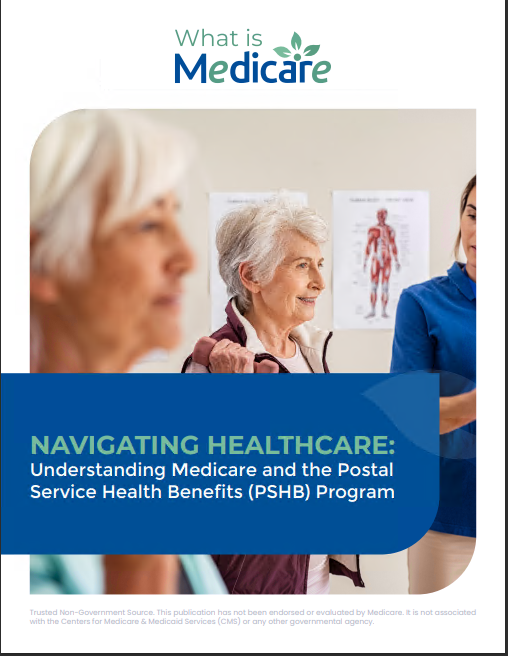Key Takeaways
- Medicare may come with unexpected costs that many individuals don’t anticipate, making planning essential.
- Understanding the different parts of Medicare and their associated expenses can help avoid surprises and ensure better financial readiness.
Why Medicare Costs More Than You Think—And How to Be Ready for It
Many people assume that once they turn 65 and enroll in Medicare, their healthcare costs will be nearly free. This assumption is far from reality. While Medicare provides critical coverage, the actual out-of-pocket costs can be higher than expected, especially for those unfamiliar with the structure of Medicare. As you approach Medicare eligibility, it’s crucial to understand the potential financial burdens and be prepared.
The Hidden Expenses of Medicare
While Medicare is a lifeline for millions of older adults, it’s essential to recognize that it isn’t free. The costs you face depend on the choices you make regarding the parts of Medicare, and these choices can significantly affect your financial future.
Understanding Medicare’s Four Parts
Medicare consists of four parts: Part A, Part B, Part C, and Part D. Each part covers different healthcare needs, and each comes with its own set of costs.
-
Medicare Part A: Known as hospital insurance, Part A generally covers inpatient hospital care, skilled nursing facility care, hospice, and some home healthcare services. For most people, there is no premium for Part A if they’ve paid Medicare taxes for a certain number of years. However, out-of-pocket costs still exist, like deductibles and coinsurance for extended hospital stays.
-
Medicare Part B: This part covers doctor visits, outpatient care, medical supplies, and preventive services. While Part B has a standard monthly premium, there’s also an annual deductible and coinsurance, which means you will likely pay 20% of the Medicare-approved amount for most doctor services.
-
Medicare Part C (Medicare Advantage): This is an alternative to Original Medicare (Parts A and B), where you receive your Medicare benefits through private insurance companies. Costs for Medicare Advantage plans vary based on the plan you choose and can include additional premiums and out-of-pocket expenses.
-
Medicare Part D: This covers prescription drugs. Part D plans are offered by private insurance companies and can involve a monthly premium, along with copayments or coinsurance for medications.
Even if you opt for Original Medicare (Parts A and B), you will still need to think about adding Part D for prescriptions and may want supplemental coverage, like Medigap, to cover additional out-of-pocket expenses.
Premiums, Deductibles, and Coinsurance Add Up
A common misconception about Medicare is that once you’re covered, all healthcare expenses vanish. The reality is that Medicare involves multiple layers of expenses, including premiums, deductibles, and coinsurance, which can add up quickly:
-
Premiums: If you’re enrolling in Medicare Part B, you will pay a monthly premium. While many people avoid the premium for Part A, they may still have to pay for Part D and any supplemental coverage they choose.
-
Deductibles: For both Medicare Part A and Part B, there are deductibles—set amounts you must pay before Medicare kicks in to cover your costs. These deductibles are subject to change each year, so it’s important to stay informed about the latest rates.
-
Coinsurance and Copayments: Even after meeting deductibles, you may be responsible for a percentage of your healthcare costs. Under Part B, for instance, after the deductible is met, Medicare typically covers 80% of approved services, leaving you with the remaining 20%.
Prescription Drug Costs
Prescription medications can be a significant expense for many people enrolled in Medicare. Although Medicare Part D helps cover these costs, the structure of the program means that your out-of-pocket costs will depend on factors such as the specific plan you choose, the drugs you need, and whether or not you enter the dreaded “donut hole.”
- The Donut Hole: While the “donut hole” has been closed in terms of coverage gaps, beneficiaries still face cost-sharing when they reach a certain level of prescription spending. Once you and your plan have spent a specific amount on covered drugs, you enter this coverage phase, which can lead to higher out-of-pocket expenses until you hit the catastrophic coverage level.
Late Enrollment Penalties
Failing to enroll in Medicare when you first become eligible can lead to penalties that increase your costs. If you don’t sign up for Medicare Part B or Part D when you’re first eligible, you could face a late enrollment penalty. This penalty is added to your monthly premium for as long as you have Medicare coverage, and it can quickly increase your healthcare expenses.
Why Healthcare Needs Can Change Over Time
Another factor to consider is that your healthcare needs may change as you get older, leading to higher expenses. You may need more frequent doctor visits, more prescription medications, or treatments for chronic conditions that develop as you age.
Medicare may not cover everything you need. For example, routine dental care, vision care, hearing aids, and long-term care are not covered by Original Medicare. If you need these services, you’ll have to pay out-of-pocket unless you have additional insurance to cover them.
Preparing for Medicare Costs
To avoid financial surprises, it’s important to plan ahead for the true costs of Medicare. Here are some steps you can take to prepare:
Budget for Healthcare
The first step in preparing for Medicare is creating a realistic budget for your healthcare expenses. Make sure you account for the following:
- Monthly premiums for Medicare Parts B, D, or any Medicare Advantage plans.
- Deductibles and coinsurance.
- Out-of-pocket costs for services not covered by Medicare, such as dental, vision, or long-term care.
- Prescription drug costs.
Consider Supplemental Insurance
Supplemental insurance plans, such as Medigap, can help cover some of the out-of-pocket expenses not covered by Original Medicare. While these plans come with additional premiums, they can save you money in the long run by covering copayments, coinsurance, and deductibles.
Reassess Annually
Medicare plans and your healthcare needs may change over time. It’s essential to reassess your plan every year during Medicare’s Annual Enrollment Period (AEP). This will give you an opportunity to adjust your coverage if necessary, ensuring it continues to meet your healthcare and financial needs.
Making the Most of Preventive Services
Medicare covers a wide range of preventive services, which can help you catch health issues early and avoid costly treatments later. Take advantage of these services, which include screenings, vaccinations, and wellness visits. By staying on top of your health, you can potentially reduce future healthcare costs.
Avoiding Financial Strain in Retirement
One of the most effective ways to avoid financial strain is by planning for healthcare costs before you retire. This means setting aside money specifically for medical expenses in retirement. You might consider contributing to a Health Savings Account (HSA) if you’re eligible, which allows you to save pre-tax dollars for healthcare costs in retirement.
If you’re already retired, look into other savings options to help cover the costs of Medicare. Having a financial buffer can help reduce stress and prevent unexpected medical expenses from impacting your lifestyle.
Staying Informed and Prepared
Medicare costs are not static; they evolve every year. Staying informed about changes to premiums, deductibles, and coverage is critical. Keep an eye on annual updates from the Centers for Medicare & Medicaid Services (CMS) and adjust your budget and coverage accordingly.
While Medicare is a valuable resource, it’s essential to recognize that it does not cover all healthcare costs. Being proactive, planning, and budgeting will ensure that you’re ready for the true cost of Medicare, avoiding financial stress and ensuring a smoother retirement.
Prepare for Healthcare Costs Now
Understanding the full picture of Medicare’s cost structure is crucial for anyone nearing retirement. By planning for premiums, deductibles, and other out-of-pocket expenses, you can avoid unexpected financial burdens. Stay informed and ready for changes, ensuring that your healthcare needs are met without financial strain.










